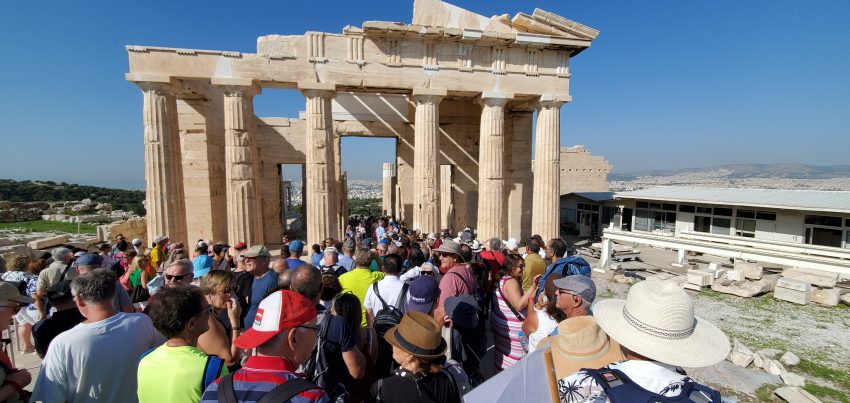Due to the pent up demand caused by the pandemic travel is high on everyone’s list – and I mean everyone. It is super busy in Europe from early spring well into late fall. Evidence can be found in the full cruise ships, often with multiple lines at every major port, large groups overbooked for bus and walking tours and the same number of independent travelers waiting in long lines to visit iconic sites.
In order to make the most of your travels there are a few changes that you should consider embedding in your planning process to avoid the large crowds, disappointment and frustration when you travel. Rick Steves, noted travel writer, says there are three types of people – travelers, tourists and pilgrims. Knowing which one you are helps to inform and guide your planning.
- Look for the serious cultural attractions over the gimmicky tourist attractions. Knowing the history of the area will help. Since peak time for most attractions are between 10 – 4 consider visiting early morning or during the last hours of the day. Be sure to get your tickets in advance to avoid long wait times
- Museums and art galleries now have timed entry tickets which should be purchased online in advance to avoid disappointment. Waiting in line still occurs but there is evidence of trying to control the crowds, a process that was started during the pandemic.
- According to Henry Wismeyer, a journalist with Business Insider, a number of cities such as Venice, Dubrovnik and Amsterdam “…have introduced prohibitions and levied new taxes on [cruise] passengers.”, citing environmental concerns and overcrowding. The economic benefits are, however, overwhelmingly positive. There are discussions around charging a tax for visitors as well. Consider cruise itineraries that include the lesser known ports of call.

- Alternately do the top tourist spots in an independent land tour that allows you to spend the nights exploring the city after the cruise ship passengers have left. Check out some of the more out of the way places, second cities in many great countries offer alternatives to the most popular sites.
- Stay in funky, small family run hotels instead of big ticket hotels or even Airbnb. Many of the short term rentals are driving out locals due to the increase in rent and reduction in availability. As a result many of the local shops are no longer locals as they cannot afford the area. Los Ramblas in Barcelona is a great example
- Consume food and beverages local to the area by getting off the beaten path. Look for small hand written menus written in the local language, eats what’s in season and look for the daily specials. This makes your culinary adventures far more interesting and keeps them within the budget. Consider food tours which are very popular in many major cities now.
- Be sure to explore the natural sites. This is a great alternative to staying in the cities, offering spectacular views, fresh air and exercise.
- Travel in the far off season; winter. You just need to dress appropriately and account for it getting darker earlier in the day. It is also usually a more cost efficient time to travel.

Guidebooks are a great resource to know “when” to visit sites as they provide information on when it is the least busy, offer alternative entrance options or how to get into multiple sites on one ticket, as well as the best views and lighting for photos. Don’t forgo the iconic sites that are on everyone’s bucket list, just give a little more consideration as to when you see them.
